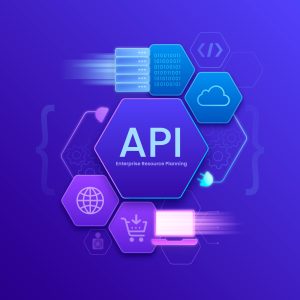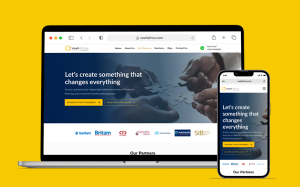For years, we’ve been knee-deep in the ever-evolving landscape of digital marketing in Africa. One thing that’s become crystal clear: understanding and mapping the customer journey – that magical path that takes someone from casually scrolling to a loyal customer – is the key to building a successful brand.
Now, why are we bringing this up? Because, let’s face it, neglecting the customer journey is like opening a restaurant with a neon sign that reads “CLOSED“. You might have the most delicious food in town, but if people can’t find you or have a frustrating experience getting their order, they’re not coming back.
We have seen firsthand the power of a well-crafted and mapped customer journey in converting leads into loyal customers for small and medium-sized enterprises (SMEs). For businesses in Africa, navigating this new landscape can be both exciting and daunting. On one hand, the digital age has opened up a world of possibilities, allowing businesses to reach and engage with customers like never before. On the other hand, the sheer volume of options and the pace of change can be overwhelming, making it challenging to stay ahead of the curve.
In this article, we’ll share our insights on how SMEs in Africa can optimize the customer journey in the digital age, from lead generation to fostering loyal customers. Let’s dive in!
Understanding the Customer Journey
The customer journey is the path a customer takes from first becoming aware of your business to ultimately becoming a loyal advocate. It’s a crucial concept to grasp, as it allows you to anticipate and address your customers’ needs and pain points at every stage of the process.
The Key Stages of the Customer Journey:
- Awareness (Getting on Their Radar): This is the stage where potential customers first become aware of your business and the products or services you offer. It’s all about getting your name out there and capturing their attention. Picture this: You’re scrolling through your Instagram feed, bombarded with perfectly curated vacation pics and celebrity gossip. Suddenly, an ad for a locally-made, organic skincare line pops up, featuring faces that look just like yours. Intrigued, you click. Boom! Awareness achieved.
- Consideration (Why You, Not the Competition?): So, you’ve piqued their interest. Now you need to convince them that your product or service is the best choice. Once a lead has become aware of your business, they’ll enter the consideration stage, where they’re evaluating their options and deciding whether your offering is the right fit for their needs.
- Decision (Making the Leap): They’ve considered their options, and they’re ready to buy. This is the conversion stage, the moment when a lead takes the desired action, such as making a purchase or signing up for a service. Optimizing the conversion stage is crucial for driving revenue and growth. This is where your website needs to shine. Remember, mobile-first! A user-friendly website with clear navigation and a smooth checkout process is essential to avoid cart abandonment, a major pain point in Africa where internet connectivity can sometimes be unreliable.
- Retention: The sale is complete, but the journey doesn’t end there. Turning one-time buyers into loyal brand advocates is key to long-term success. Retaining customers is just as important as acquiring new ones. This stage focuses on keeping your customers satisfied and engaged, so they continue to do business with you. Remember that customer who bought your skincare product on Instagram? Send them targeted follow-up emails with skincare tips or exclusive offers based on their purchase. Loyalty programs tailored to the African market (think mobile-based point systems or rewards redeemable for local experiences) can also incentivize repeat purchases and build brand loyalty.
- Advocacy: The holy grail of the customer journey is turning your customers into advocates who actively recommend your business to their friends and network. This stage is all about fostering loyalty and word-of-mouth marketing.
Personalizing the Customer Journey
One of the key things we’ve learned in working with SMEs in Africa is the importance of personalization. Customers today expect a tailored experience that caters to their unique needs and preferences.
For example, we worked with a small e-commerce business in Nairobi that struggled to convert leads into loyal customers. By analyzing their customer data and implementing personalized product recommendations, they were able to increase their average order value by 27% and reduce their cart abandonment rate by 15%. It was a game-changer for their business.
Optimizing the Customer Journey for SMEs in Africa
Now that we’ve covered the basics of the customer journey, let’s dive into some practical strategies for SMEs in Africa to optimize their processes.
Leveraging Digital Tools and Platforms
The days of relying solely on traditional marketing tactics like print ads or trade shows are long gone. Today, there are countless tools and platforms available to SMEs that can help optimize their customer journey. From social media and email marketing to customer relationship management (CRM) systems, these tools can help SMEs reach their target audience, engage with them, and track their interactions to improve the customer journey. Businesses need to embrace this range of digital channels to effectively generate and nurture leads.
Social media is a powerful tool for reaching and engaging with potential customers. We worked with a restaurant owner who used a combination of Facebook, Instagram, and TikTok to showcase their products, share behind-the-scenes content, and connect with their target audience. As a result, they saw a significant increase in website traffic and up to a 35% boost in sales.
Content marketing is another effective way to attract and nurture leads. By creating valuable, informative content that addresses your customers’ pain points, you can position your business as a trusted authority and build stronger relationships. We’ve worked with brands who use blog posts, videos, and webinars to great effect.
Email marketing is also a crucial component of the lead nurturing process. By segmenting your email list and sending personalized, relevant messages, you can keep your brand top of mind and guide your leads through the customer journey.
Enhancing the Online Sales Experience
In today’s digital landscape, the online sales experience is just as important as the in-person one. Businesses need to ensure that their website and checkout process are user-friendly and optimized for conversion.
We worked with a small e-commerce business in Nairobi that was struggling with high cart abandonment rates. By simplifying the checkout process, adding clear calls-to-action, and incorporating personalized product recommendations, they were able to increase their conversion rate by 23%.
Another key aspect of the online sales experience is the ability to provide personalized product recommendations. We’ve seen brands use advanced algorithms to suggest products based on a customer’s browsing history, search queries, and past purchases. This not only enhances the customer experience but also drives incremental revenue.
Fostering Customer Loyalty and Advocacy
While acquiring new customers is essential for growth, retaining existing customers and fostering loyalty is equally important. Retaining customers and turning them into loyal advocates is the ultimate goal of the customer journey. SMEs in Africa can achieve this by providing exceptional customer support, implementing effective loyalty programs, and encouraging customer feedback and reviews.
We’ll never forget the time we worked with a service-based business with several branches across Africa that were struggling with high customer churn. By implementing a robust customer support system, including a dedicated hotline and a responsive live chat feature, they were able to improve their customer satisfaction scores by 35% and reduce their churn rate by 20%.
Loyalty programs are another powerful way to keep customers engaged and coming back. An example of a way to achieve this is by launching a rewards program that offers points for purchases, referrals, and social media engagement.
Encouraging customer feedback and reviews is also crucial for building trust and fostering advocacy. Brands today are starting to leverage platforms like Google, Facebook, and industry-specific review sites to showcase their positive customer experiences and address any concerns in a timely manner.
Leveraging Data and Analytics
Data is the lifeblood of any successful business. SMEs in Africa need to embrace a data-driven approach to optimizing the customer journey. Throughout the customer journey, data and analytics play a crucial role in informing your strategies and optimizing your efforts.
By capturing and analyzing customer data across all touchpoints, you can gain valuable insights into their behaviours, preferences, and pain points. This allows you to make data-driven decisions that drive better results for your business.
Collecting and Analyzing Customer Data
By leveraging web analytics, customer relationship management (CRM) systems, and social media analytics, brands can gain valuable insights into their customers’ behaviour, preferences, and pain points. This allows you to make data-driven decisions that drive better results for your business. One of our clients was able to use these tools to identify the most effective marketing channels, optimize their website, and personalize their product recommendations.
Applying Insights to Optimize the Customer Journey
Once you’ve collected and analyzed your customer data, the next step is to apply those insights to optimize the customer journey. This could involve A/B testing different website designs, experimenting with new marketing tactics, or fine-tuning your customer support processes.
Adapting to the Changing Digital Landscape
The digital landscape is constantly evolving, and businesses need to be prepared to adapt and stay ahead of the curve.
Emerging Trends and Technologies
From chatbots and conversational AI to augmented and virtual reality, there are a host of new technologies that are transforming the customer experience. We’ve handled brands that have embraced these innovations, such as using chatbots to provide 24/7 customer support and incorporating AR features to allow customers to virtually try on products.
Strategies for Staying Ahead of the Curve
Staying up-to-date with the latest trends and technologies is crucial, but it’s also important to cultivate a culture of innovation within your organization. This might involve continuous learning and upskilling for your team, as well as collaborating with digital experts who can help you stay ahead of the curve.
This reminds us of a client who had a fintech startup that was struggling to keep pace with the rapidly evolving industry. By implementing a structured training program and bringing in a team of digital consultants, they were able to not only stay competitive but also introduce several groundbreaking innovations that helped them stand out in the market.
In the digital age, the customer journey has become increasingly complex and dynamic. But for small and medium-sized enterprises (SMEs) across Africa, embracing this new landscape presents a wealth of opportunities to connect with and retain customers like never before.
By understanding the key stages of the customer journey, leveraging digital channels to generate and nurture leads, enhancing the online sales experience, fostering customer loyalty and advocacy, and embracing a data-driven decision-making approach, brands can position themselves for long-term success.
Remember, the customer is at the heart of everything you do. By adopting a customer-centric approach and continuously adapting to the changing digital landscape, you can transform your business and build a loyal customer base that will propel you to new heights.
Mastering the customer journey is an ongoing process that requires a strategic, results-focused approach. Partnering with a high-performance digital marketing, communications, and sales enablement agency can provide you with the expertise and resources needed to navigate this complex landscape and drive sustainable growth for your brand.
So, what are you waiting for? It’s time to embark on your own journey from lead to loyal customer!











